- Clone
- Duha59 (See other available formats)
- Regulatory Status
- RUO
- Other Names
- Entpd1, NTPDase1
- Isotype
- Rat IgG2a, κ
- Ave. Rating
- Submit a Review
- Product Citations
- publications
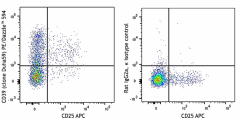
-

C57BL/6 Mouse splenocytes were stained with CD4 FITC, CD25 PE, and CD39 (clone Duha59) PE/Dazzle™ 594 (left) or Rat IgG2a, κ PE/Dazzle™ 594 isotype control (right). Data shown are from CD4+ gated population.
| Cat # | Size | Price | Quantity Check Availability | Save | ||
|---|---|---|---|---|---|---|
| 143811 | 25 µg | 137€ | ||||
| 143812 | 100 µg | 306€ | ||||
CD39, nucleoside triphosphate diphosphohydrolase-1 (NTPDase 1), is an ectoenzyme that degrades ATP to AMP. It is a member of the ectonucleoside triphosphate dihydrolases (E-NTPDases), which are involved in regulation of extracellular nucleotide catabolism and controlling the extracellular nucleoside triphosphate pool (NTP). CD39 is the dominant member of this family in the immune system, and is involved in suppression of inflammation and control of platelet activation. CD39 is expressed on B cells, dendritic cells, and a subset of T cells, including regulatory T cells and memory T cells. The coordinated expression of CD39/CD73 on Tregs and the adenosine A2A receptor on activated T effector cells generates immunosuppressive loops.
Product DetailsProduct Details
- Verified Reactivity
- Mouse
- Antibody Type
- Monoclonal
- Host Species
- Rat
- Immunogen
- CD39 cDNA expression vector
- Formulation
- Phosphate-buffered solution, pH 7.2, containing 0.09% sodium azide.
- Preparation
- The antibody was purified by affinity chromatography and conjugated with PE/Dazzle™ 594 under optimal conditions.
- Concentration
- 0.2 mg/ml
- Storage & Handling
- The antibody solution should be stored undiluted between 2°C and 8°C, and protected from prolonged exposure to light. Do not freeze.
- Application
-
FC - Quality tested
- Recommended Usage
-
Each lot of this antibody is quality control tested by immunofluorescent staining with flow cytometric analysis. For flow cytometric staining, the suggested use of this reagent is ≤1.0 µg per million cells in 100 µl volume. It is recommended that the reagent be titrated for optimal performance for each application.
* PE/Dazzle™ 594 has a maximum excitation of 566 nm and a maximum emission of 610 nm. - Excitation Laser
-
Blue Laser (488 nm)
Green Laser (532 nm)/Yellow-Green Laser (561 nm)
- Product Citations
-
- RRID
-
AB_2750321 (BioLegend Cat. No. 143811)
AB_2750321 (BioLegend Cat. No. 143812)
Antigen Details
- Structure
- A member of ectonucleoside triphosphate dihydrolases (E-NTPDases), an ectoenzyme that degrades ATP to AMP
- Distribution
-
B cells, dendritic cells, and a subset of T cells
- Function
- Involved in suppression of inflammation and control of platelet activation; coordinated expression of CD39/CD73 on Tregs and the adenosine A2A receptor on activated T effector cells generates immunosuppressive loops
- Interaction
- Proteolysis of amyloid precursor protein (APP)
- Cell Type
- B cells, Dendritic cells, T cells, Tregs
- Biology Area
- Immunology
- Molecular Family
- CD Molecules
- Antigen References
-
1. Borsellino G, et al. 2007. Blood 110:1225.
2. Deaglio S, et al. 2007. J. Exp. Med. 204:1257.
3. Bynoe MS, et al. 2008. Trends Immunol. 29:99.
4. Ndhlovu LC, et al. 2010. Eur. J. Immunol. 40:134. - Gene ID
- 12495 View all products for this Gene ID
- UniProt
- View information about CD39 on UniProt.org
Other Formats
View All CD39 Reagents Request Custom Conjugation| Description | Clone | Applications |
|---|---|---|
| Purified anti-mouse CD39 | Duha59 | FC |
| PE anti-mouse CD39 | Duha59 | FC |
| PE/Cyanine7 anti-mouse CD39 | Duha59 | FC |
| Alexa Fluor® 647 anti-mouse CD39 | Duha59 | FC |
| PE/Dazzle™ 594 anti-mouse CD39 | Duha59 | FC |
| APC anti-mouse CD39 | Duha59 | FC |
| TotalSeq™-A0834 anti-mouse CD39 | Duha59 | PG |
| TotalSeq™-C0834 anti-mouse CD39 | Duha59 | PG |
| PE/Fire™ 640 anti-mouse CD39 | Duha59 | FC |
| PE/Fire™ 700 anti-mouse CD39 | Duha59 | FC |
| PerCP/Fire™ 806 anti-mouse CD39 | Duha59 | FC |
| PE/Cyanine5 anti-mouse CD39 | Duha59 | FC |
| PerCP/Fire™ 780 anti-mouse CD39 | Duha59 | FC |
Customers Also Purchased


Compare Data Across All Formats
This data display is provided for general comparisons between formats.
Your actual data may vary due to variations in samples, target cells, instruments and their settings, staining conditions, and other factors.
If you need assistance with selecting the best format contact our expert technical support team.
-
Purified anti-mouse CD39

C57BL/6 mouse lymph node cells were stained with CD4 PerCP, ... 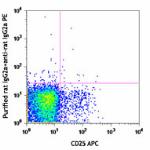
-
PE anti-mouse CD39
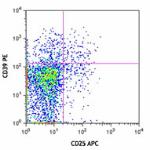
C57BL/6 mouse lymph node cells were stained with CD4 PerCP, ... 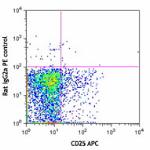
-
PE/Cyanine7 anti-mouse CD39

C57BL/6 splenocytes were stained with CD4 FITC, CD25 Brillia... -
Alexa Fluor® 647 anti-mouse CD39

C57BL/6 splenocytes were stained with CD4 FITC, CD25 PE/Cyan... -
PE/Dazzle™ 594 anti-mouse CD39

C57BL/6 Mouse splenocytes were stained with CD4 FITC, CD25 P... -
APC anti-mouse CD39

C57BL/6 Mouse splenocytes were stained with CD4 FITC, CD25 P... -
TotalSeq™-A0834 anti-mouse CD39
-
TotalSeq™-C0834 anti-mouse CD39
-
PE/Fire™ 640 anti-mouse CD39

C57BL/6 splenocytes were stained with anti-mouse CD4 (clone ... -
PE/Fire™ 700 anti-mouse CD39

C57BL/6 mouse splenocytes were stained with anti-mouse CD4 F... -
PerCP/Fire™ 806 anti-mouse CD39

C57BL/6 mouse splenocytes were stained with anti-mouse CD4 F... -
PE/Cyanine5 anti-mouse CD39

C57BL/6 mouse splenocytes were stained with anti-mouse CD4 (... -
PerCP/Fire™ 780 anti-mouse CD39

C57BL/6 splenocytes were stained with anti-mouse CD4 (clone ...
 Login / Register
Login / Register 











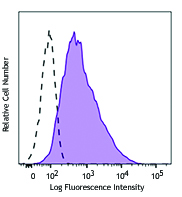
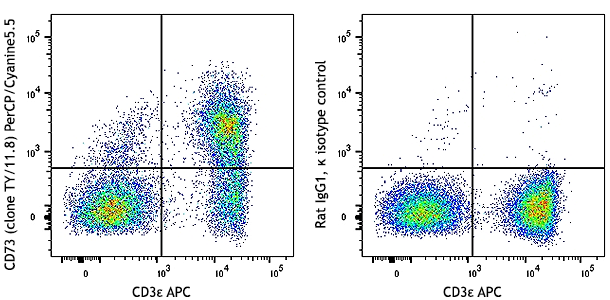



Follow Us